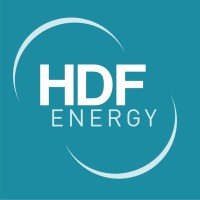Fortescue explores green hydrogen in Newfoundland and Labrador
Newfoundland and Labrador have enormous potential to be a renewable energy powerhouse and to realize the substantial economic benefit that can come from that.

Fortescue Future Industries (FFI) has held its first in-person public information session in Newfoundland and Labrador to discuss potential renewable energy production on the island portion of the province.
FFI has filed a registration for an Environmental Assessment for its proposed green hydrogen production and export development, including hydrogen electrolysis and green ammonia production plant, liquid ammonia marine export terminal, and wind power generation facilities.
In alignment with FFI’s commitment to building thriving communities through delivering social, environmental, and economic benefits, FFI is engaging with Qalipu and Miawpukek First Nations on the island of Newfoundland, as well as all levels of government, most specifically communities, regarding the proposed development.
The proposed production plant will recover nitrogen from the air and combine it with hydrogen to produce an estimated 700,000 to 900,000 tonnes/year of green ammonia – a common industrial and agricultural chemical that can replace traditional fuels like oil and gas. The industry is highly regulated, and producers and users must follow established safe handling and storage procedures.
Ammonia can be stored and shipped as a liquid – allowing green ammonia produced at the facility to be supplied to overseas and domestic markets, particularly Europe, which is seeking energy independence from Russia.
Options for hydrogen storage would also be developed using established gas storage techniques, providing significant flexibility to the green ammonia production facility and helping smooth out the intermittency of wind power generation.
The proposed development also includes the construction of two 600 MW green ammonia production trains (located together at the same production site) and wind power facilities to achieve an overall 2,000 MW nominal capacity. A portion of the power could potentially be provided from the grid to the production facility.
The proposed development is in addition to FFI’s ongoing work with the Innu Nation in Labrador regarding Gull Island and other FFI projects under review in British Columbia, Nova Scotia, Quebec, Ontario, and Manitoba.
Stephen Appleton, FFI Country Manager for Canada, said the proposed development would put Newfoundland and Labrador at the forefront of the global race to develop large-scale zero-emission energy.
“Our First Nation is very impressed with FFI and its planned approach to renewable energy in Newfoundland and Labrador,” said Chief Mi’sel Joe.
